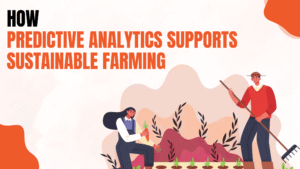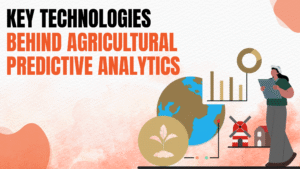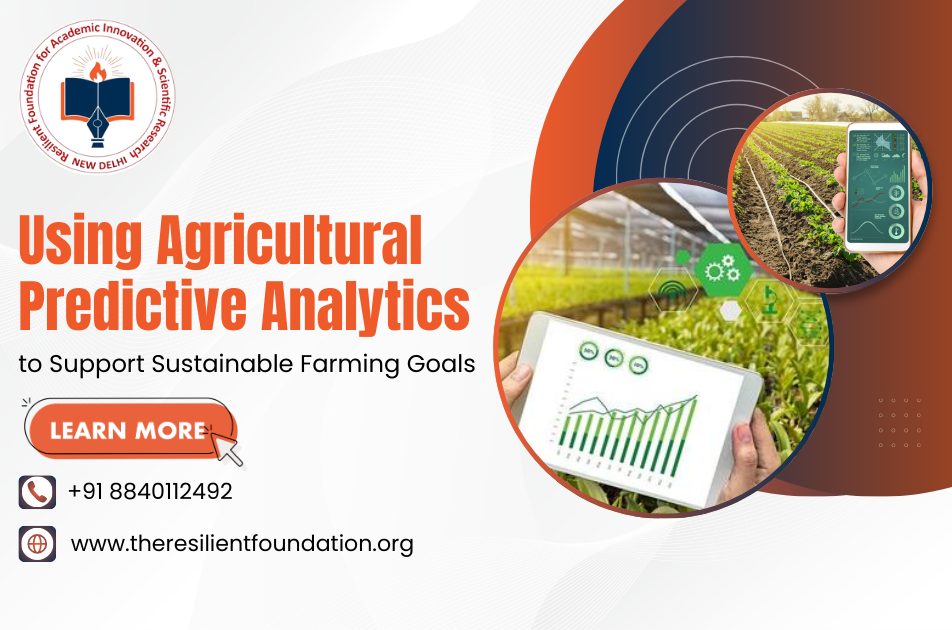Farming is not as simple as it was in the past. Farmers now face many problems like changing weather, less water, soil damage, and rising costs. Because of that, they cannot depend only on experience or guesses. They need new ways to make farming safe and successful. Agricultural predictive analytics gives farmers this power. It uses data, weather records, and soil details to show what may happen in the future. If farmers follow these ideas, they can grow more food, waste less, and protect nature. This way, sustainable agriculture becomes possible, and farming stays strong for the coming generations.
What is Agricultural Predictive Analytics?
Farmers always made decisions based on what they saw and learned over the years. But now, modern technology makes choices easier and more correct. Agricultural predictive analytics means studying old and new data to predict what will happen in farming later. This makes farming smarter and less risky.
Here are the main points explained in simple words:
- Data Collection: Farmers can use satellites, drones, and sensors to collect details about soil, water, and crops. These details also help in agricultural research and improve farming methods.
- Weather Predictions: Weather is very important in farming. Predictive models show farmers whether it may rain, stay dry, or turn hot. If farmers know in advance, they can plan for sustainable agriculture better.
- Crop Health Monitoring: By using images and tools, farmers can check crop health early. If there are signs of disease or pests, they can act fast. This is why agriculture analytics is becoming very useful.
- Yield Forecasting: Farmers can study past harvests and soil health to know how much crop they may grow. Because of that, they can plan for storage and markets. These ideas come from new research in agriculture.
- Decision Support: Predictive systems also give clear advice, like when to water or when to use fertiliser. With the help of agricultural predictive analytics, farming becomes easier for everyone.
How Predictive Analytics Supports Sustainable Farming
Farmers want to grow more food while saving land, soil, and water for the future. Agricultural predictive analytics helps them do both simultaneously. It gives them the right steps so they do not waste anythin

Here is how it supports farming in simple words:
- Water Use Efficiency: Farmers know the right time and the right amount of water to give to crops. Because of that, no water is wasted, and sustainable agriculture becomes possible.
- Soil Management: Soil needs care to stay healthy. Predictive tools tell farmers when soil needs extra nutrients or organic matter. This is also useful for agricultural research.
- Reduced Chemical Use: Farmers sometimes use too many chemicals, which harm the soil and water. But predictive tools guide them to use only what is needed. This makes agriculture analytics safer and cheaper.
- Pest and Disease Control: Crops get damaged if pests spread fast. Predictive systems give alerts before damage happens. Also, new research in agriculture makes these alerts stronger.
- Better Planning: Farmers can match crop growth with what the market needs. Therefore, they sell crops at the right time, reduce waste, and earn more.
Key Technologies Behind Agricultural Predictive Analytics
The success of agricultural predictive analytics comes from strong but easy-to-use technologies. Farmers do not need to be experts; they just need simple training to use these tools.

Here are the key technologies explained in detail:
- Remote Sensing: Satellites and drones take photos of farms from above. These photos show whether crops are healthy or stressed. This supports sustainable agriculture.
- IoT Devices: Small sensors in the soil collect details like water level, temperature, and nutrients. This data also becomes useful for agricultural research.
- Artificial Intelligence (AI): AI can study huge amounts of data quickly. It finds patterns that humans may not see. Because of that, agriculture analytics becomes more correct.
- Machine Learning (ML): ML is a part of AI that learns from past data. Each season, it gets better at giving advice. This is possible due to new research in agriculture.
- Cloud Computing: Farmers can save their data online and see it anytime. Even small farmers in remote areas can use this to benefit from agricultural predictive analytics.
Future Trends in Agricultural Predictive Analytics
Farming will continue to change in the future, and technology will guide it more and more. Farmers, scientists, and groups like Resilient Foundation will play a big role in ensuring these tools reach every farmer, even in small villages.
Here are the main future trends:
- AI-Powered Forecasting: Predictions will become sharper, and agricultural predictive analytics will guide farmers step by step.
- Climate-Resilient Farming: Farmers will learn which crops can survive floods, heat, or drought. This will protect sustainable agriculture.
- Genetic Crop Analysis: Agricultural research helps farmers determine which seeds are stronger and yield better.
- Smart Market Integration: Farmers will grow only what people need. By using agriculture analytics, they will sell faster and reduce waste.
- Community-Based Platforms: These platforms, like the Resilient Foundation, will bring new tools and training to rural farmers. They will also spread new research in agriculture and improve food security for all.

